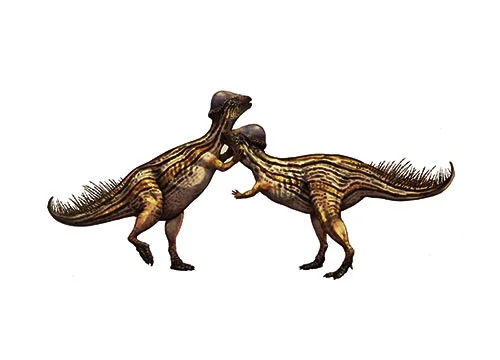Prenocephale (Sloped head)

Pree-no-sef-ah-lay
Maryanska & Osmolska - 1974
Herbivore
Estimated 2 meters long
Euornithopod
P. prenes (type), P. brevis, P. edmontonensis
Mongolia – Gobi Desert
Late Cretaceous, 70-66 million years ago
Prenocephale Facts
Prenocephale, which means “sloped head,” is a genus of herbivorous dinosaur that lived during the Late Cretaceous period, approximately 70 to 66 million years ago. It was a member of the group known as pachycephalosaurs, or “thick-headed lizards,” which were characterized by their thick, domed skulls.
Prenocephale was first discovered in the Gobi Desert of Mongolia in 1946 by a team of Soviet paleontologists. Since then, numerous fossils have been found in various locations around the world, including North America and Asia.
Like other pachycephalosaurs, Prenocephale had a thick, dome-shaped skull that was heavily reinforced with bone. The skull was also sloped at the front, which gave it a distinctive appearance. The exact function of the thick skull is not fully understood, but it is believed to have been used in head-butting contests between males during mating season, or in defense against predators.
Prenocephale was a relatively small dinosaur, measuring approximately 2 meters (6.6 feet) in length and weighing up to 40 kilograms (88 pounds). It was a bipedal animal, meaning it walked on two legs, and its hind legs were longer than its forelimbs. It had sharp, serrated teeth that it used to tear vegetation, such as leaves and stems.
One interesting feature of Prenocephale is its thick, muscular neck. This may have been an adaptation for head-butting, allowing the dinosaur to generate a greater amount of force and protect its brain from injury.
In conclusion, Prenocephale is a unique and fascinating dinosaur with a thick, domed skull and a sloped head. As a paleontologist, studying fossils of Prenocephale and other dinosaurs helps us to better understand the evolution and diversity of life on Earth millions of years ago.



